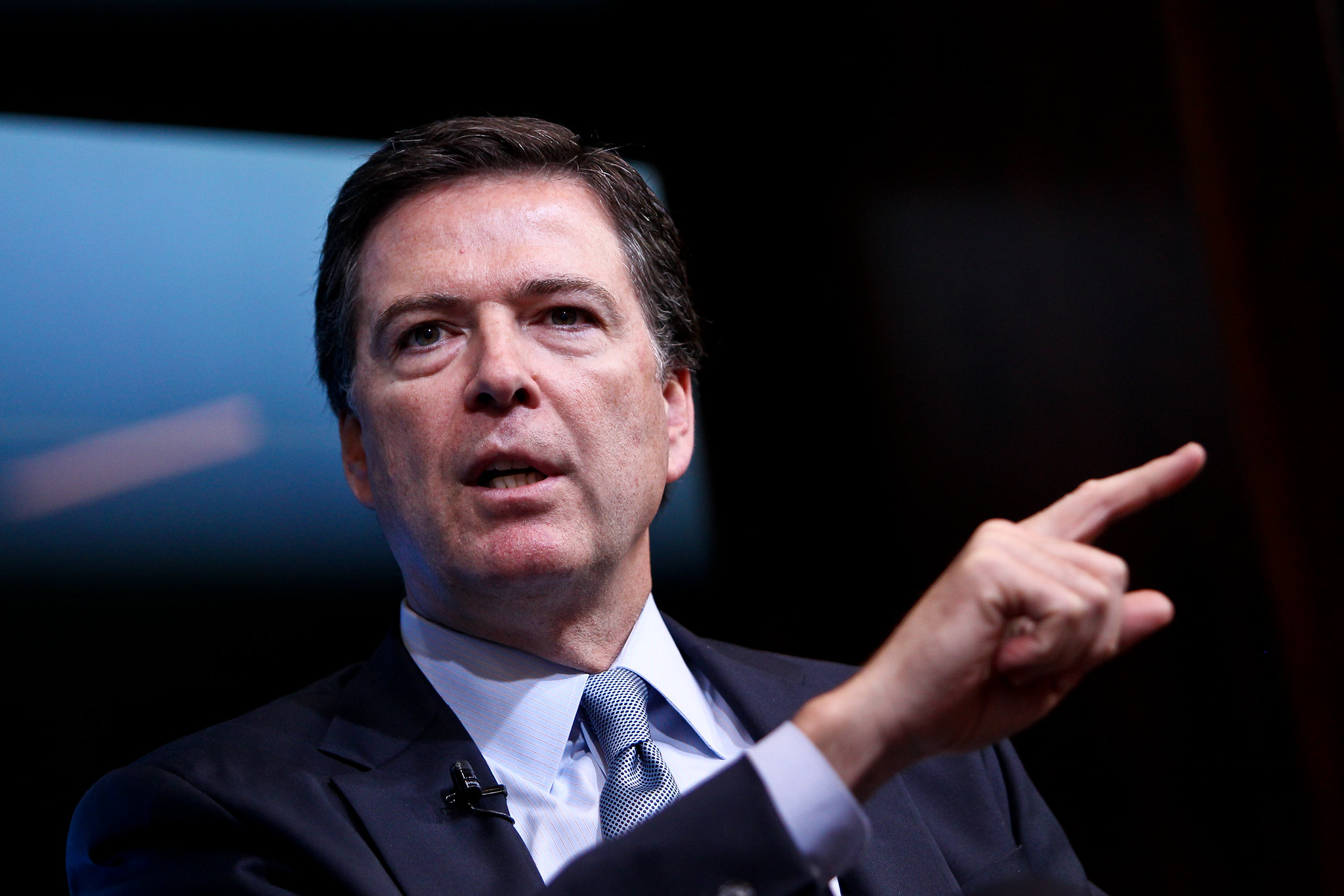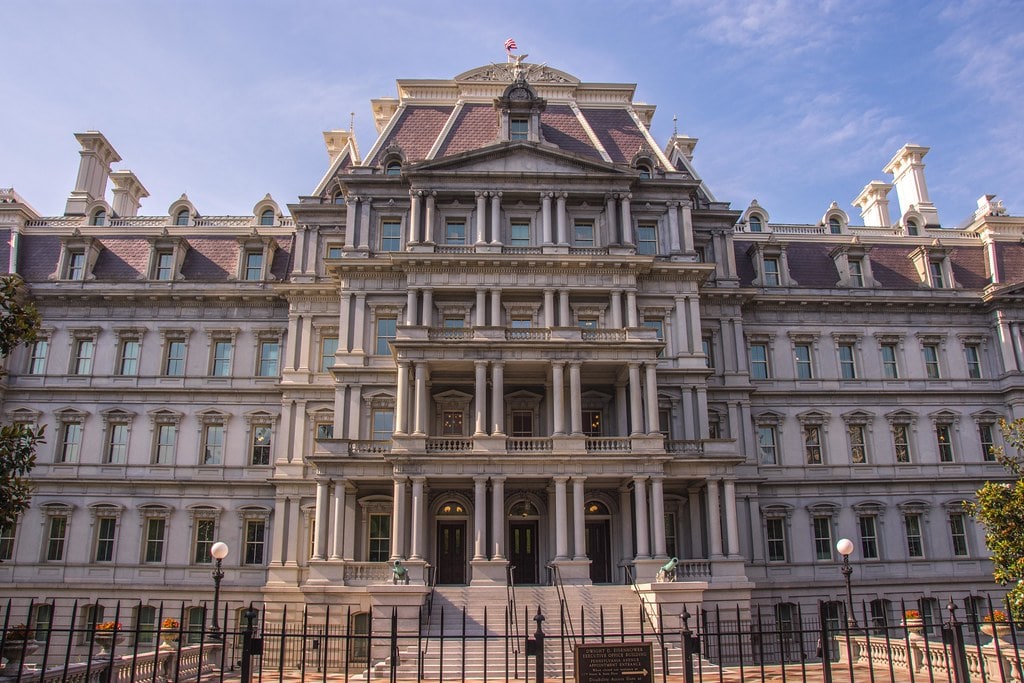The Situation: And What If He Meant It?
James Comey could have gone a lot stronger than “8647” and still not risked jail.

Published by The Lawfare Institute
in Cooperation With

The Situation on Friday objected to recognition of Michael Flynn at the National Symphony.
Today let’s talk seashells.
Former FBI Director James Comey sent the MAGA world into a tizzy last week by sharing on social media a picture of seashells arranged to say “8647” on the beach. Director of National Intelligence Tulsi Gabbard said he should be in jail for threatening President Trump. Homeland Security Secretary Kristi Noem announced that the Secret Service, which she oversees, was investigating the matter. Current FBI Director Kash Patel said the bureau stood ready to assist the Secret Service in investigating him. And Trump himself rejected Comey’s explanation that he had not known that the numbers 86 could mean kill, not just get rid of, and deleted the post when he found out.
The Secret Service interviewed Comey on Friday.
We take Comey at his word that the social media post was not intended to provoke violence. The verb “to 86” someone has long referred to getting rid of people in ways other than killing them; it actually comes from the service industry, where it means being out of something or to throw a customer out of a bar. The violent usage of the term is more recent. If Comey’s use of the term is a threat, lots of online retailers are peddling threats to the president’s life. And even more were doing so during Joe Biden’s term, when merch with “8646” was common. There is exactly zero reason to think that Comey was trying to inspire an assassination attempt against Trump.
But let’s imagine for a minute that he was. Let’s pretend, just for a second, that Comey did, in fact, intend “86” in a violent way.
After all, the director of the FBI, the director of national intelligence, and the secretary of homeland security—not to mention Donald Trump himself—all purport to believe this interpretation. These are, after all, the senior national security officials of the United States of America. And more generally, the right-wing media ecosystem, which so energetically objected on free speech grounds to the Justice Department’s investigations of threats to public officials, flight attendants, and others, couldn’t now be adopting a wholly different standard that actually impinges on free speech, could it?
So let’s impute to him, as the senior leadership of the Trump administration does, the most nefarious possible use of the seashell image. And let’s, just for the sake of argument, assume that Comey is lying about the seashells, which he claims to have found on the beach already arranged in this threatening posture. Let’s imagine that Comey meticulously arranged the seashells in order to take a photo, share that photo, and thus communicate a request for an assassination of the sitting president to the public at large—hoping that some patsy would pick up a gun and do the deed.
So what?
Even if this absurdly ungenerous interpretation of a picture of seashells were the correct one, there would still be no justification for, as Tulsi Gabbard put it, Comey to go to jail. If the administration wants to condemn Comey’s post, fine. If we thought there was even a small chance that Comey was encouraging violence, we’d join the condemnation. One shouldn’t joke about, let alone advocate, political violence, especially given the two assassination attempts against Trump. And if Secretary Noem wants to waste a few of her Secret Service officers’ afternoon on a drive to Virginia and a pointless interview, that’s fine too. One of us was once the subject of a similar Secret Service interview about an equally absurd supposed “threat” on social media. The matter amounted to nothing, and we’re sure Comey acquitted himself just fine in a chat with some federal agents.
But what’s not remotely plausible is treating this as a criminal matter. First, the statute at issue, 18 U.S.C. § 871(a), criminalizes the act of “knowingly and willfully” making “any threat to take the life of, to kidnap, or to inflict bodily harm upon the President of the United States.” (A broader prohibition, 18 U.S.C. § 875(c), criminalizes making threats through interstate communications.)
The law requires an actual threat—“a serious expression conveying that a speaker means to commit an act of unlawful of violence”—not some cryptic statement about the desirability of harm befalling the president. Nothing in the picture supports the existence of such a threat—certainly not one made knowingly and willfully. What threat exactly is Comey supposed to be making here against Trump: death by sharpened mollusk?
Indeed, interpreted in the light least favorable to Comey, the mollusks in question don’t even make out a threat. They make out a request: Will somebody please 86 the current president? Interpreted as violently as possible, that translates to: Someone please murder Donald Trump. That’s arguably a call to violence, but it isn’t a threat.
And this brings us to the bigger problem for a potential United States v. Comey: that pesky First Amendment, which sets an extremely high bar for prosecuting speech as either a “true threat” or an incitement of violence and does not, last we checked, have an exception for presidential egos.
We’re not over our skis here: This is as clear as it gets in constitutional law. In Brandenburg v. Ohio, the Court held “the constitutional guarantees of free speech and free press do not permit [a law] to forbid or proscribe advocacy of the use of force or of law violation except where such advocacy is directed to inciting or producing imminent lawless action and is likely to incite or produce such action.” The key point is that even exhortations to violence cannot be criminalized unless they are detailed and the threat of lawlessness is imminent.
Immediacy and proximity is also what distinguishes a “threat” in the colloquial sense from a “true threat” in the legal sense. Indeed, in Watts v. United States, decided the very same term as Brandenburg, the Court held that § 871 must be interpreted in light of this strong First Amendment background. In that case, the Court overturned the conviction of a protester who said, “If they ever make me carry a rifle, the first man I want to get in my sights is L.B.J.” The Court found this to be “political hyperbole” rather than a true threat and thus not within the prohibition of § 871. That case was about a rifle. The Supreme Court has even struck down an anti-cross-burning statute as going beyond criminalizing the “true threat.” This incident—we can’t stress enough—is not about rifles or burning crosses. It is about seashells.
In short, Comey could have been a lot more aggressive and still been solidly within the protection of the First Amendment. He could have spelled out with seashells: “Will nobody rid me of this meddlesome 47?” Had he had the time and the patience, he could have gotten away with a seashell design that said, “If they ever make me carry a rifle, the first man I want to get in my sights is 47.” Or maybe, “If we catch 47, we’re gonna break your damn neck" (see NAACP v. Claiborne Hardware). Or he might have written, “if our President, our Congress, our Supreme Court, continues to embrace MAGA ideas, it’s possible that there might have to be some revengeance taken” (see Brandenburg).
But our imaginary Evil Comey wimped out and stuck with some numbers.
And no, this episode isn’t funny. It’s just another example of the authoritarian strategy of “for my friends everything, for my enemies the law.” Ironically, the First Amendment principle that protects Comey here is the exact same one that protected Trump—much more tenuously—from a prosecution for inciting a mob to attack the Capitol.
That incident actually got people killed and interfered with the peaceful transition of power.
This one involved, quite literally, a walk on the beach.
The Situation continues tomorrow.







